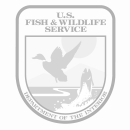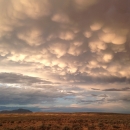Continued Technical Assistance to the Sagebrush Conservation Design: Publishing the Scenarios Work and Expanding our Monitoring Tool to Include Key Ecological Indicators from Local Vegetation.
Funding Year | Amount | Location |
FY23 | $99,995 | Rangewide |
| FY24 | $119,944 | Rangewide |
Project Description
This project will lead to a more healthy ecosystem on which the rural community lives by specifically understanding and planning for the effects of climate change climate change
Climate change includes both global warming driven by human-induced emissions of greenhouse gases and the resulting large-scale shifts in weather patterns. Though there have been previous periods of climatic change, since the mid-20th century humans have had an unprecedented impact on Earth's climate system and caused change on a global scale.
Learn more about climate change . Technical experts will support the Sagebrush Conservation Design with continued data upkeep of the monitoring tool, publication of the scenarios work from FY23 Sagebrush Conservation Design, incorporate local-scale plant community insights into the monitoring framework, and work with lead pollinator researchers to ensure we develop key ecological indicators for pollinators that can be tracked through time across the sagebrush sagebrush
The western United States’ sagebrush country encompasses over 175 million acres of public and private lands. The sagebrush landscape provides many benefits to our rural economies and communities, and it serves as crucial habitat for a diversity of wildlife, including the iconic greater sage-grouse and over 350 other species.
Learn more about sagebrush biome.
Partners
Conservation Planning Technologies, U.S. Geological Survey, U.S. Department of Agriculture, The Nature Conservancy, Oregon State University, Bureau of Land Management, Conservation Science Partners, Western Association of Fish and Wildlife Agencies, Center for Large Landscape Conservation, Aldo Leopold Wilderness Research Institute, U.S. Forest Service


